July 5, 2024
Australian Brandenburg Orchestra
Review by Paul Neeson (Arts Wednesday)
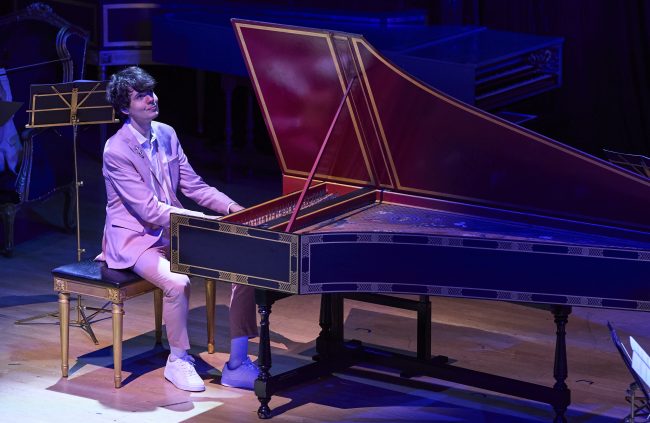
A sumptuous night of harpsichord with the Australian Brandenburg Orchestra and guest harpsichordist Justin Taylor from France.
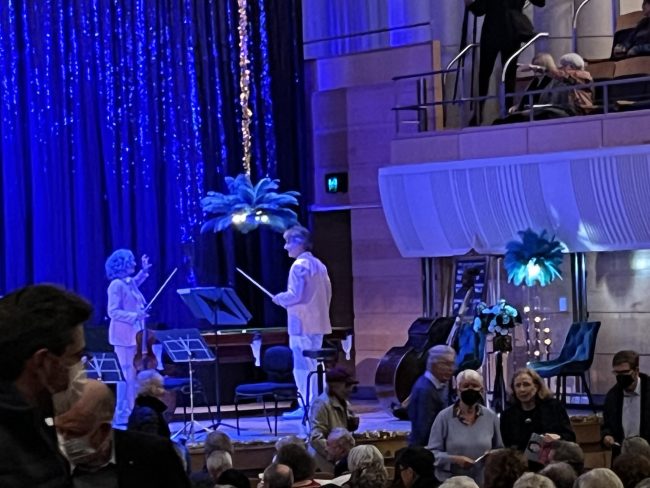
For this concert Artistic Director, Paul Dyer and Production Designer, Trent Suidgeest recreated with great and authentic detail a salon from the Palace of Versailles. A glittering peacock blue curtained backdrop – was it sequinned? – no, it was fabulously lit beautifully from above; this was highlighted and contrasted with the rich emerald green brocaded Louis XIV chairs perfectly blending with a good smattering of incandescent chandeliers, candelabras and of course lush fernery – it all to set a romantic, almost orientalist but very French scene. Given that the program included a concerto for 4 harpsichords, the stage would eventually become very crowded, in which case it left us all wondering why there was a billiard table onstage being happily played at by various members of the orchestra throughout the concert. The mystery was solved when Paul Dyer swept on to the stage from the wings to open the concert to inform us, among other things, that the game of billiards and thus the billiard table was invented at Versailles. Who would ever have known?
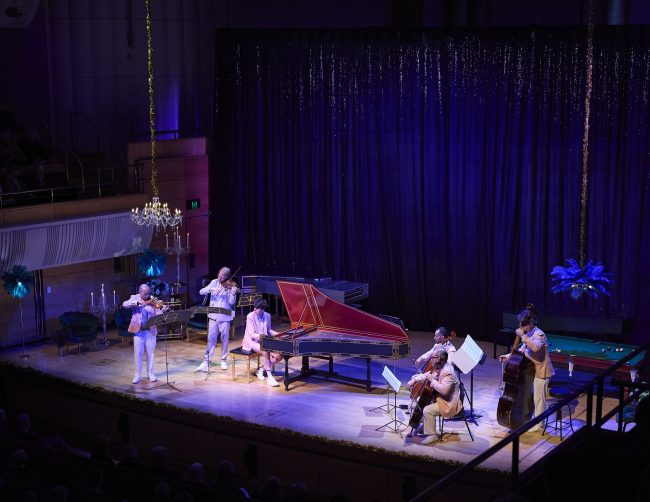
Justin Taylor is the harpsichord wunderkind of Europe with his CV of awards and a who’s who of musicians and orchestras he has performed with requiring two columns of the program notes. And we very quickly found out why. Each mordent, appoggiatura and acciaccatura was given the perfect weight and emphasis to make the note-rich passages sing. What an extraordinary talent for one so young.
The fist half of the program belonged entirely to him performing works by Baroque composers, some famous names, others more obscure but equally delightful. Several works were for solo harpsichord by Royer and Duphly, others with the orchestra. The Baroque period (1629-1750) saw the development and perfection of the theme and variations form exemplified by Rameau’s Les Sauvages and d’Angelbert’s version of Folies d’Espagne. La Folia (as it is known in Italian) is one of the oldest recorded melodies originating sometime in the 15th century and has been a theme of countless compositions ever since. It is basically a ‘ground’ (to be technical) or chord progression that musicians have used to jam on for centuries. You already know the melody and chords, just think of Vangelis’s Conquest of Paradise or even Britney Spears’ Oops I did it again. A tune that is firmly planted in our DNA and as familiar as 12 bar blues.
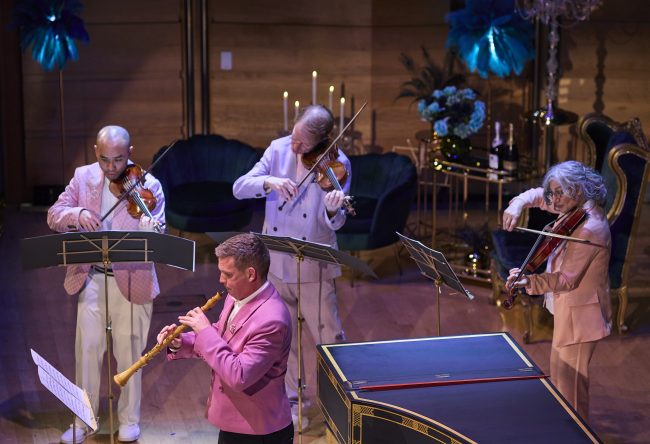
The second half comprised 3 concertos. The first, Bach’s Italian Concerto written for solo two-manual harpsichord, the piano and forte manuals creating the contrasting sections of the structure usually performed by a soloist and ensemble.
Next we had a rarely performed Oboe Concerto by Jiranek, giving us an auditory respite from the sound of the harpsichord. Soloist Adam Masters performing the Australian premiere of this work did an outstanding job.
And finally, after some significant stage reshuffling, during which violinist Shaun Lee-Chen and bassist Robert Nairn gave us a rather jazzy improv on (you guessed it) La Folia, the four harpsichords were assembled on the stage. Only a composer of Bach’s standard could control the complexity of four keyboards with such precision, dynamics and emotion. Justin Taylor was joined on stage by Paul Dyer, Neal Peres Da Costa and Anthony Abouhamad for this delicious Baroque masterpiece.
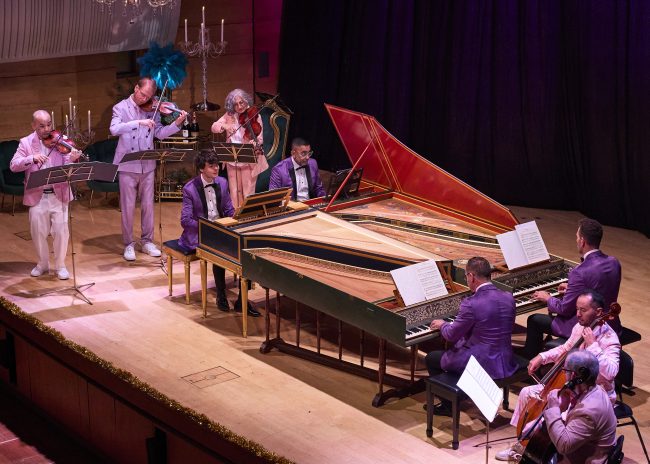
And the audience were thrilled, so much that an encore was in order. And who would have thought we’d hear La Folia once again, this time with each of the harpsichordists and several of the string players having a round of the ground to improvise on.
When too many harpsichords are never enough (to paraphrase Roy and H.G.) the Australian Brandenburg Orchestra delight and surprise us all over again, so utterly wonderful!